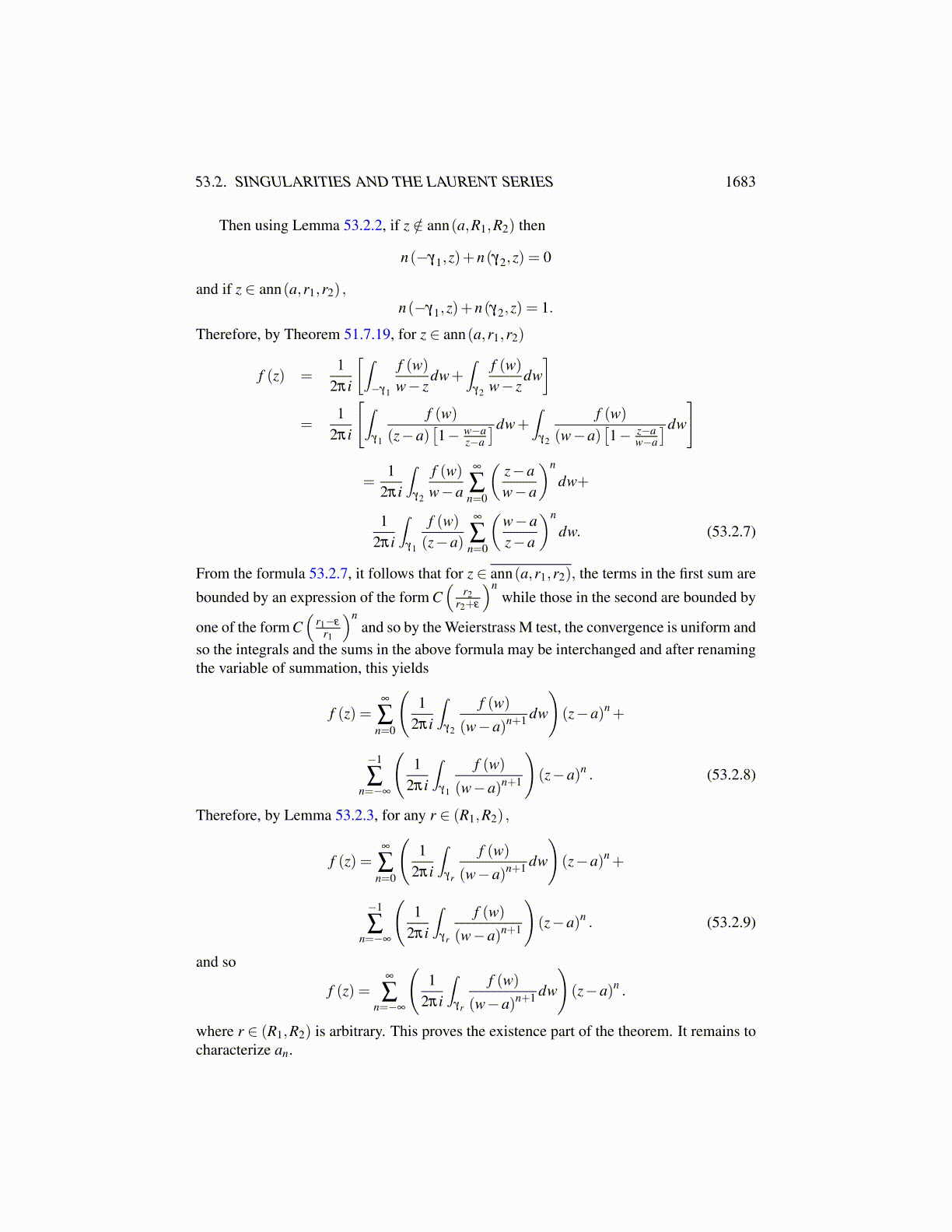
53.2. SINGULARITIES AND THE LAURENT SERIES 1683
Lemma 53.2.3 Let g be analytic on ann(a,R1,R2) . Then if γr (t)≡ a+ reit for t ∈ [0,2π]and r ∈ (R1,R2) , then
∫γr
g(z)dz is independent of r.
Proof: Let R1 < r1 < r2 < R2 and denote by −γr (t) the curve, −γr (t)≡ a+ rei(2π−t)
for t ∈ [0,2π] . Then if z∈ B(a,R1), Lemma 53.2.2 implies both n(γr2
,z)
and n(γr1
,z)= 1
and son(−γr1
,z)+n(γr2
,z)=−1+1 = 0.
Also if z /∈ B(a,R2) , then Lemma 53.2.2 implies n(
γr j,z)= 0 for j = 1,2. Therefore,
whenever z /∈ ann(a,R1,R2) , the sum of the winding numbers equals zero. Therefore,by Theorem 51.7.19 applied to the function, f (w) = g(z)(w− z) and z ∈ ann(a,R1,R2)\∪2
j=1γr j([0,2π]) ,
f (z)(n(γr2
,z)+n(−γr1
,z))
= 0(n(γr2
,z)+n(−γr1
,z))
=
12πi
∫γr2
g(w)(w− z)w− z
dw− 12πi
∫γr1
g(w)(w− z)w− z
dw
=1
2πi
∫γr2
g(w)dw− 12πi
∫γr1
g(w)dw
which proves the desired result.
53.2.2 The Laurent SeriesThe Laurent series is like a power series except it allows for negative exponents. First hereis a definition of what is meant by the convergence of such a series.
Definition 53.2.4 ∑∞n=−∞ an (z−a)n converges if both the series,
∞
∑n=0
an (z−a)n and∞
∑n=1
a−n (z−a)−n
converge. When this is the case, the symbol, ∑∞n=−∞ an (z−a)n is defined as
∞
∑n=0
an (z−a)n +∞
∑n=1
a−n (z−a)−n .
Lemma 53.2.5 Suppose
f (z) =∞
∑n=−∞
an (z−a)n
for all |z−a| ∈ (R1,R2) . Then both ∑∞n=0 an (z−a)n and ∑
∞n=1 a−n (z−a)−n converge abso-
lutely and uniformly on {z : r1 ≤ |z−a| ≤ r2} for any r1 < r2 satisfying R1 < r1 < r2 < R2.